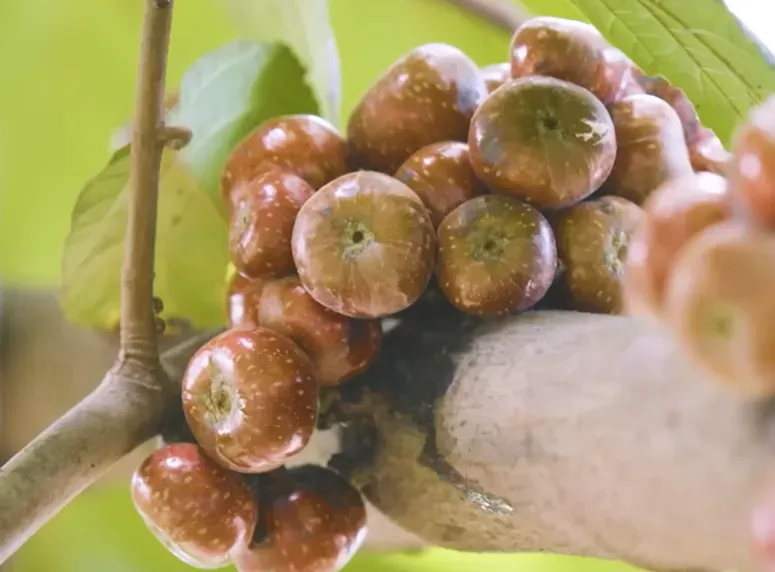Fruits are nature’s candy, but not all of them look—or smell—like a treat. In the Philippines, some fruits are ignored, even feared, simply because of their appearance or scent. But as it turns out, these wild fruits have hidden treasures inside that many locals are only beginning to rediscover.
Let’s dive into three of the most misunderstood Philippine Wild Fruits and see what makes them worth a second look.
1. Stinking Passion Flower (Santo Papa)
Known As:
- Utot-utot (Visayas)
- Santo Papa (Zamboanga)
- Stinking Passion Flower (English)
At first whiff, this fruit might turn you away. Its natural odor isn’t the most appealing—hence the nickname “utot-utot.” But for Fe, a native of Zamboanga who now farms in Cavite, this fruit has always been known by a more reverent name: Santo Papa.
Why People Avoid It:
Locals in some parts of Cavite believe the fruit is poisonous. Its odd scent and hairy, armor-like exterior don’t help its reputation.
The Truth:
According to experts, the fruit belongs to the passion fruit family. When unripe (green), it produces cyanogenic compounds—yes, cyanide. But when it’s fully ripe—yellow-orange and soft—it becomes completely safe to eat. Its juicy, sweet-sour flavor is similar to lanzones.
Fe confidently eats it and shares, “I’ve eaten it since I was young. If it were poisonous, I’d be long gone by now.”
2. Tibig: The “Water Fruit” of Bulacan
Known As:
- Tibig (Bulacan)
- Wild Fig
This fruit looks like a mini-guava but grows in clusters with vibrant red, green, and orange skins. In Barangay Tibig, Bulacan, the tree got its name because it naturally grows near water sources.

Why People Avoid It:
Many younger residents were told it’s poisonous. It fell out of popularity, and the trees have dwindled down to just a few in their community.
The Truth:
Farmer Ben from Tayabas, Quezon, discovered the fruit’s value through research. When ripe, female tibig fruits are juicy and sweet, with a fig-like flavor. Male fruits, however, are dry and tasteless.
Ben now sells them online, and chefs use them as garnishes. Beyond taste, the tibig tree also helps in water conservation and biodiversity, making it a valuable crop.
3. Forest Cucumber: Hangover Cure from Aklan
Known As:
- Pipinong Gubat (Aklan)
- Forest Cucumber
This tiny cucumber, no bigger than an aratiles, grows wild and is a surprising go-to hangover remedy for locals like Leandro.
Why People Avoid It:
Old tales say it’s poisonous, but Leandro and others found otherwise. After eating it post-drinking, he noticed his headache disappear. It’s now his go-to pulutan.
The Truth:
The fruit is edible when young and crunchy. It has a tangy, refreshing cucumber taste. However, once it becomes overly ripe and soft, it can act as a laxative. So yes, caution is needed—but it’s far from toxic.
Final Thoughts
These fruits—Santo Papa, Tibig, and Forest Cucumber—remind us not to judge nature’s gifts by their looks or smells. Myths, passed down through generations, often overshadow nutritional value and cultural importance. As more people rediscover these hidden treasures, perhaps we’ll see them not just in the forests and riversides—but on our tables, too.
Watch the full video:
